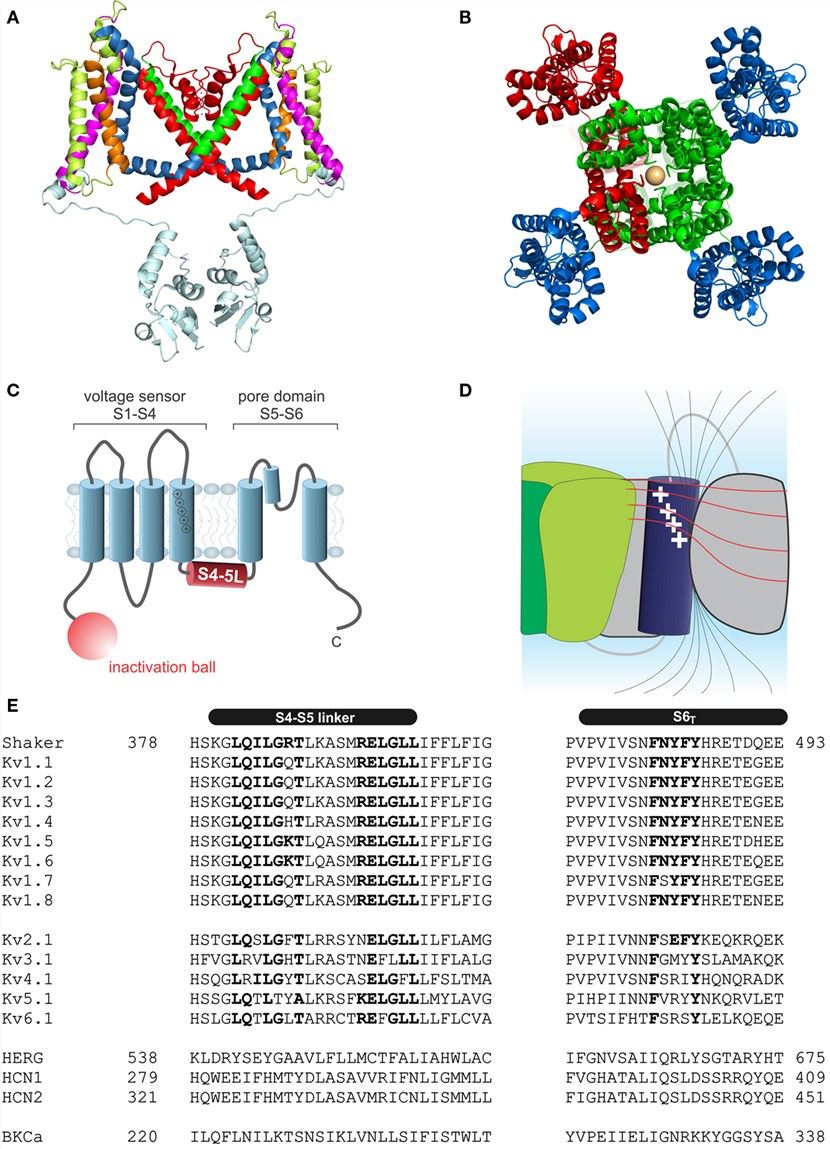Introduction of KCND1
KCND1, also known as Kv4.1, is an integral membrane protein that belongs to the Kv4 subfamily of voltage-gated potassium channels. There are four members in Kv4 subfamily including Kv4.1, Kv4.2, and two Kv4.3 splice variants. KCND1 protein encoded by KCND1 gene has 647 amino acid residues. It possesses six putative transmembrane segments (S1-S6) with a voltage-sensor in S4, flanked by intracellular domains of variable length and a pore domain P between S5 and S6. KCND1 is highly expressed in brain, in particular in cerebellum and thalamus.
| Basic Information of KCND1 | |
| Protein Name | Potassium voltage-gated channel subfamily D member 1 |
| Gene Name | KCND1 |
| Aliases | Kv4.1 |
| Organism | Homo sapiens (Human) |
| UniProt ID | Q9NSA2 |
| Transmembrane Times | 6 |
| Length (aa) | 647 |
| Sequence | MAAGLATWLPFARAAAVGWLPLAQQPLPPAPGVKASRGDEVLVVNVSGRRFETWKNTLDRYPDTLLGSSEKEFFYDADSGEYFFDRDPDMFRHVLNFYRTGRLHCPRQECIQAFDEELAFYGLVPELVGDCCLEEYRDRKKENAERLAEDEEAEQAGDGPALPAGSSLRQRLWRAFENPHTSTAALVFYYVTGFFIAVSVIANVVETIPCRGSARRSSREQPCGERFPQAFFCMDTACVLIFTGEYLLRLFAAPSRCRFLRSVMSLIDVVAILPYYIGLLVPKNDDVSGAFVTLRVFRVFRIFKFSRHSQGLRILGYTLKSCASELGFLLFSLTMAIIIFATVMFYAEKGTNKTNFTSIPAAFWYTIVTMTTLGYGDMVPSTIAGKIFGSICSLSGVLVIALPVPVIVSNFSRIYHQNQRADKRRAQQKVRLARIRLAKSGTTNAFLQYKQNGGLEDSGSGEEQALCVRNRSAFEQQHHHLLHCLEKTTCHEFTDELTFSEALGAVSPGGRTSRSTSVSSQPVGPGSLLSSCCPRRAKRRAIRLANSTASVSRGSMQELDMLAGLRRSHAPQSRSSLNAKPHDSLDLNCDSRDFVAAIISIPTPPANTPDESQPSSPGGGGRAGSTLRNSSLGTPCLFPETVKISSL |
Function of KCND1 Membrane Protein
KCND1 is a voltage-gated potassium channel that plays an important role in the regulation of potassium ion permeability of excitable membranes in accordance with their electrochemical gradient. It functions in the repolarization of membrane action potentials. KCND1 generates fast-inactivating or A-type K+ currents (IA) including the fast-transient outward current I(To) that regulates the initial repolarization of the action potential in cardiac ventricular myocytes. Mutations in the KCND genes are associated with diseases related to altered cardiac and/or neuronal excitability. And KCND1 has been regarded as a therapeutic target for arrhythmia. Moreover, the activity of voltage-gated potassium channels plays an important role in a number of physiological processes including mediation of neurotransmitter release, insulin secretion, heart rate, and smooth muscle contraction. In addition, KCND1 is also involved in the progression of tumors. And KCND1 has been revealed a role in the proliferation of human gastric cancer cells and tumorigenic human mammary epithelial cells.
 Fig.1 Structure of voltage-gated potassium channels. (Blunck, 2012)
Fig.1 Structure of voltage-gated potassium channels. (Blunck, 2012)
Application of KCND1 Membrane Protein in Literature
The study suggests that acute knockdown of Kv4.1 significantly decrease the circadian period of spontaneous electrical activity, clock gene expression, and locomotor activity.
The study shows that the overexpression of microtubule binding protein tau downregulates Kv channels and reduces currents. This can explain the low sensitivity to anti-cancer chemicals in some specific cancer tissues.
The study shows a role of Kv4.1 K+ Channels in the proliferation of the human gastric cancer cells and Kv4.1 can be regarded as a target for the treatment of gastric cancer.
The study indicates the function of Kv4.1 in the proliferation of tumorigenic human mammary epithelial cells. The increased expression of Kv4.1 may be a useful diagnostic marker for staging mammary tumors. And Kv4.1 blockage can inhibit the proliferation of tumor cell.
The immunoblotting data show a higher level of Kv4.1 receptor expression in patients with cortical dysplasia with intractable epilepsy.
KCND1 Preparation Options
To obtain the soluble and functional target protein, the versatile Magic™ membrane protein production platform in Creative Biolabs enables many flexible options, from which you can always find a better match for your particular project. Aided by our versatile Magic™ anti-membrane protein antibody discovery platform, we also provide customized anti-KCND1 antibody development services.
As a forward-looking research institute as well as a leading custom service provider in the field of membrane protein, Creative Biolabs has won good reputation among our worldwide customers for successfully accomplishing numerous challenging projects including generation of many functional membrane proteins. Please feel free to contact us for more information.
Reference
All listed services and products are For Research Use Only. Do Not use in any diagnostic or therapeutic applications.